-
1948
Koshima,
the Beginning of Primatology in Japan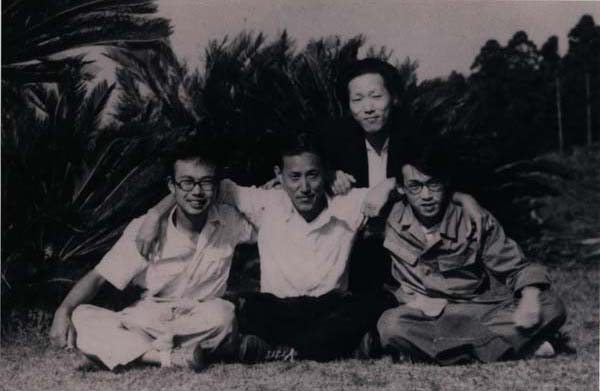
The discipline of Primatology started in Japan on December 3rd, 1948. The late Kinji Imanishi (1902-1992) and his two students, from Kyoto University, went to Koshima Island to observe wild Japanese monkeys.
Photo © Primate Research Institute, Kyoto University / Itani Junichiro Archives -
1953
Sweet-Potato Washing
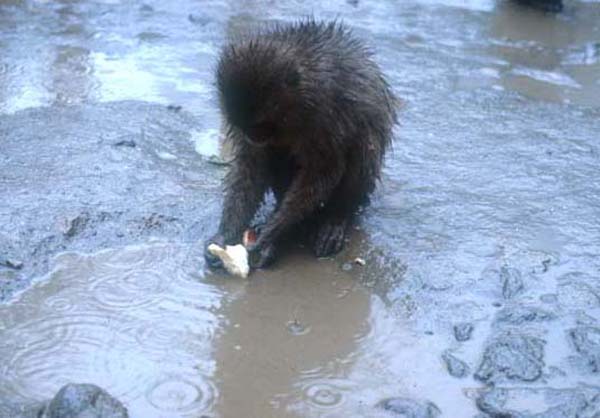
Sweet-potato washing among Koshima monkeys was first observed.
Photo © Primate Research Institute, Kyoto University / Itani Junichiro Archives
References:
-Kawai, M. (1965). Newly-acquired pre-cultural behavior of the natural troop of Japanese monkeys on Koshima Islet. Primates, 6(1), 1-30.
-Torigoe, T. (1985). Comparison of object manipulation among 74 species of non-human primates. Primates, 26(2), 182-194.
-Hirata, S., Watanabe, K., & Masao, K. (2001). “Sweet-potato washing” revisited. In Primate origins of human cognition and behavior (pp. 487-508). Springer Japan. -
1956
The Japan Monkey Centre (JMC)

JMC was founded on October 17th to promote research, education, conservation, welfare, and communication to the public regarding nonhuman primates.

The first Annual Meeting of Primates Studies held.
Photos © Primate Research Institute, Kyoto University / Itani Junichiro Archives -
1957
Journal of Primatology PRIMATES
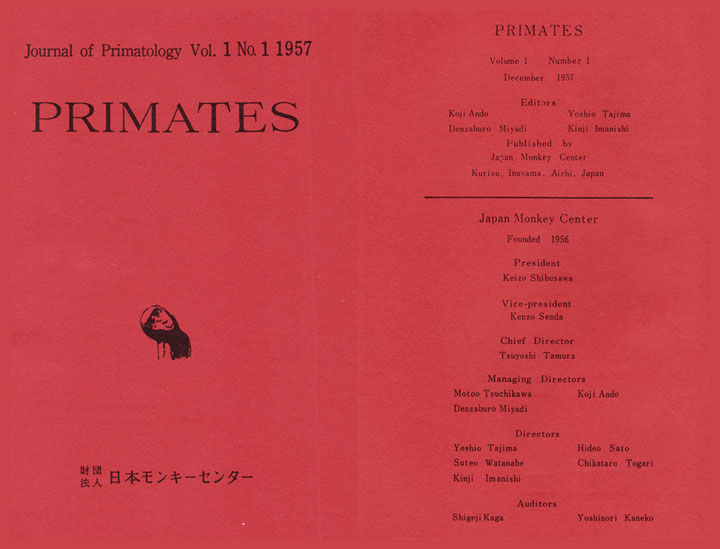
The Japan Monkey Centre (JMC) began the journal, "Primates", now the oldest Primatology journal written in English. In 1957, the Japan Monkey Centre (JMC) began the journal, Primates, currently the longest-running Primatology journal written in English. Dr. Kinji Imanishi, one of the founding editors, expressed his joy at the birth of Primates and its bright ambitions in the afterword to Volume 1, Issue 1, of Primates. It is as follows. Note: Originally written in Japanese. The first two issues of Primates were written in Japanese (with index and abstracts in English).
Afterword of Volume 1, Issue 1 of Primates, October 25, 1957
Currently, there is no journal specializing in primatology; I declare that this is the very first primatology journal. Isn't this exciting? First of all, primatology department is non-existent in any university of the world, and therefore there is nothing such as an academic society for primatology. The modification in the operation of academic authority is evidenced by the fact that the Japan Monkey Centre (JMC) introduced the publication of this specialized journal, skipping the normal course of development, which is to begin by establishing a department at a university, followed by organizing an academic society, and then publishing a journal. The term "primatology" can be translated as "reichourui-gaku" in Japanese. But, we do not prefer such a difficult, orotund name. The primatology that we envision is a new scholarly endeavor to comprehensively investigate, so to speak, the genealogical history of humankind, by comparatively studying primates situated in various phylogenetic statuses, from various academic fields from the perspectives of not only morphology and development, but also physiology, psychology, ecology, sociology, and so forth.
It is from this standpoint that we conceived, an idea of gathering various primate species from around the world in a zoo that is expected to be built under the supervision of the JMC; we do not recklessly expand our research focus to include animals that do not share recent common genealogy with humankind. In this first volume, only articles that are based on naturalistic observations of Japanese monkeys could be included, but this journal seeks to gradually fulfill all the aforementioned ambitions. On the other hand, I request contributions from outside the country and promotion of the journal, until it achieves global recognition. I might have made too many irresponsible remarks, but I just want things to proceed in a lively manner, anticipating a bright future for us. Therefore, I sincerely ask your support and cooperation.
Kinji Imanishi -
1958
First Time Africa

The JMC initiated the first expedition to Africa to study wild gorillas and chimpanzees in the February of this year.
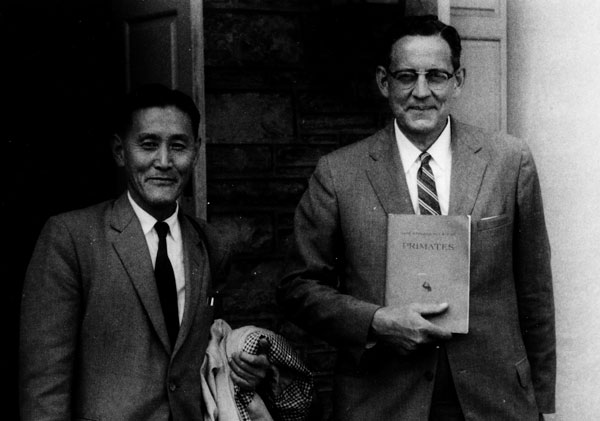
An additional aim of the expedition was to meet with researchers at many different institutions around the world.
Photo: Dr. Carpenter (right), holding the very first issue of the Journal Primates, with Dr. Imanishi (left).
Photos © Primate Research Institute, Kyoto University / Itani Junichiro Archives -
1960
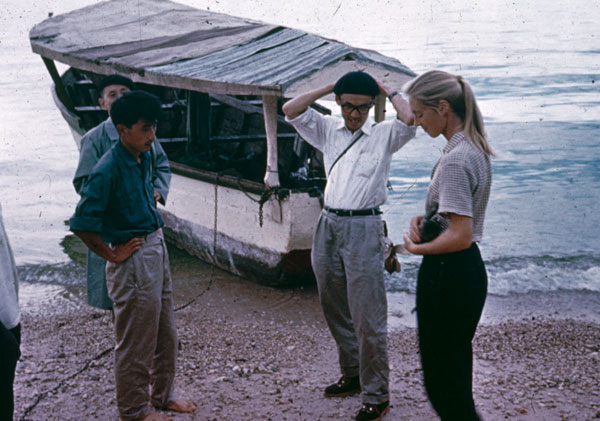
The JMC sent Dr. Junichiro Itani on the third expedition to Africa. On September 29th, Dr. Itani arrived at Gombe and met with Dr. Jane Goodall.
Photo: from left to right: Drs Azuma, Imanishi, Itani, and Goodall (1961).
© Primate Research Institute, Kyoto University / Itani Junichiro Archives -
1965
Dr. Toshisada Nishida succeeded in establishing the, now, second longest running wild chimpanzee research site at Mahale Mountains in western Tanzania.
-
1967
Primate Research Institute
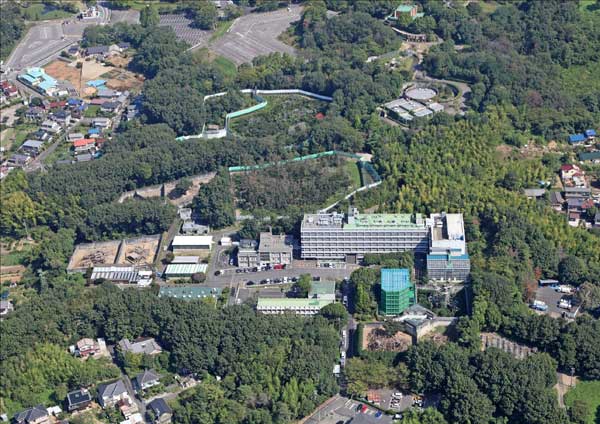
The Primate Research Institute (PRI) was established near to the JMC, with the help of JMC researchers. They joined PRI and played a vital role in managing PRI in the early days.
Photo © Primate Research Institute, Kyoto University / Takeshi Furuichi -
1971
The JMC funded Dr. Kosei Izawa to launch the first Japanese expedition to the Amazon.
-
2014
Beginning of a New Endeavor
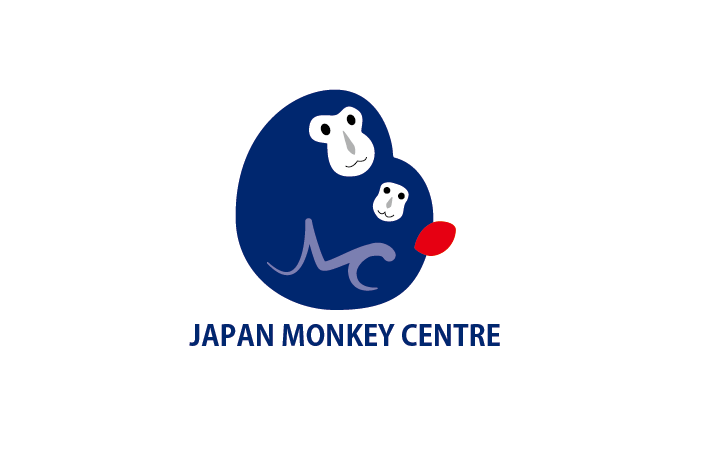
The Japan Monkey Centre (JMC) became a 'Public Interest Incorporated Foundation ' from April 2014.